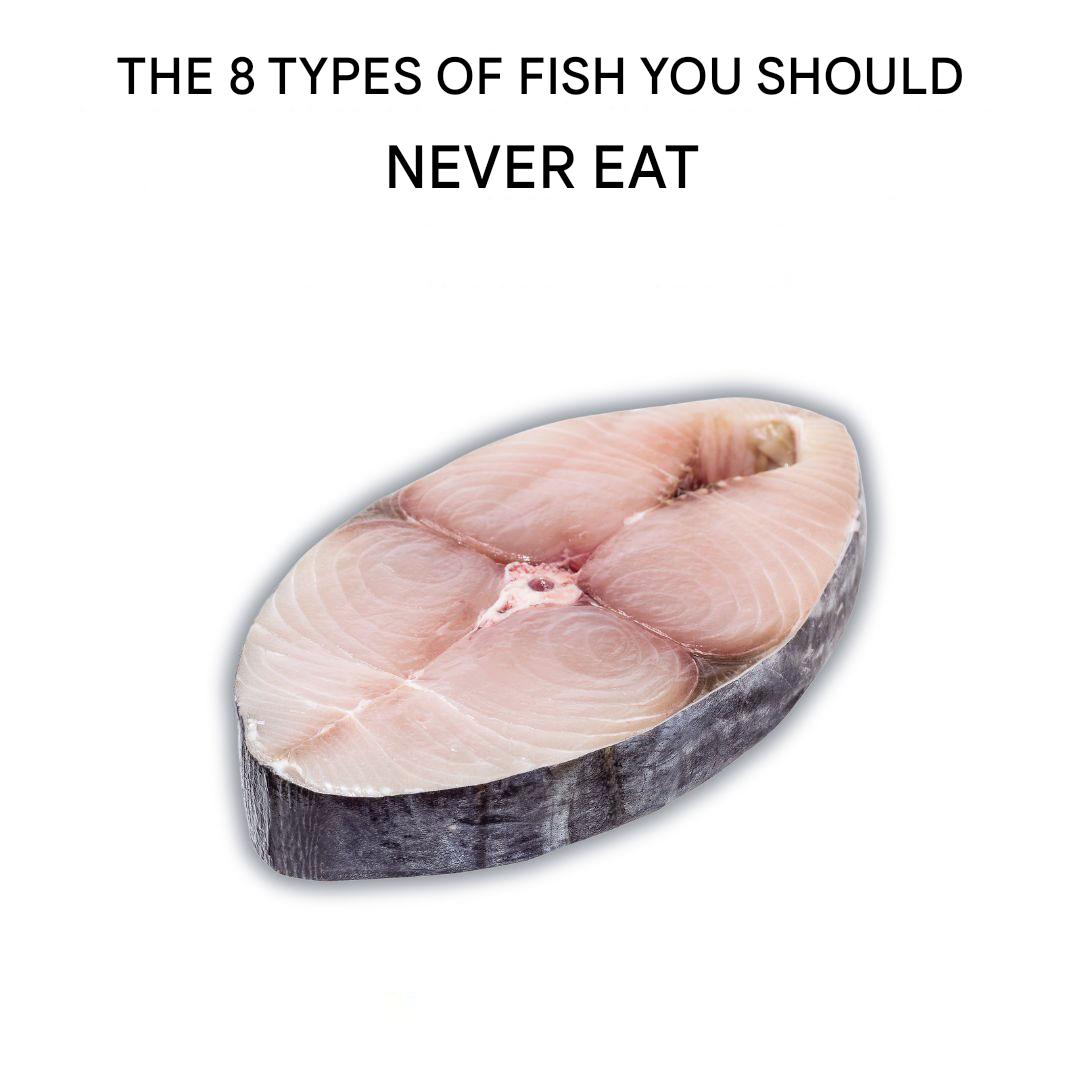ADVERTISEMENT
**Top 8 Types of Fish to Avoid on Your Plate**
When it comes to eating seafood, many of us enjoy the taste and nutritional benefits that fish can offer. However, not all fish are created equal, and some may have harmful environmental, health, or sustainability concerns. With concerns about overfishing, mercury contamination, and the decline of marine ecosystems, it’s important to make informed choices about the fish we consume.
To help guide you towards healthier and more environmentally friendly options, we’ve put together a list of the **Top 8 Types of Fish to Avoid on Your Plate**. These fish are often associated with harmful practices or high levels of toxins that can affect both your health and the health of our oceans.
### 1. **Chilean Sea Bass**
Also known as **Patagonian toothfish**, the Chilean Sea Bass has become a highly sought-after delicacy. Unfortunately, it is often caught in deep, cold waters in the Southern Ocean, where overfishing is a significant issue. Many Chilean Sea Bass fisheries are unregulated or poorly managed, leading to unsustainable harvests that harm marine ecosystems. In addition, this fish tends to accumulate high levels of mercury and other toxins, making it a less than ideal choice for your plate.
**Why avoid it?**
– Overfishing concerns
– Harmful environmental impact
– High mercury content
### 2. **Atlantic Bluefin Tuna**
Bluefin tuna is known for its large size and rich, flavorful meat, often found in sushi and sashimi dishes. However, the **Atlantic Bluefin Tuna** has become one of the most endangered species of tuna due to overfishing. These fish are slow to reproduce, and their populations have been severely depleted over the years. Despite efforts to regulate the fishing of bluefin tuna, illegal fishing practices and high demand continue to threaten the species.
**Why avoid it?**
– Endangered species
– Unsustainable fishing practices
– Slow reproductive rate
### 3. **Shark**
Shark populations are under significant threat due to overfishing and the practice of **shark finning**, where the fins are removed and the body is discarded back into the ocean. Many species of sharks are slow-growing and long-living, making them especially vulnerable to overfishing. Additionally, sharks are high in mercury, which can pose health risks, particularly when consumed frequently.
**Why avoid it?**
– Overfishing and finning practices
– High mercury levels
– Endangered species
For Complete Cooking STEPS Please Head On Over To Next Page Or Open button (>) and don’t forget to SHARE with your Facebook friends
### 4. **King Mackerel**
King mackerel is a popular fish known for its firm texture and strong flavor. Unfortunately, it is also known for its high levels of **mercury**, which can be harmful to human health. Pregnant women, young children, and people with compromised immune systems should be particularly cautious about consuming king mackerel. Due to the fish’s position at the top of the food chain, it accumulates mercury from its diet of smaller fish.
**Why avoid it?**
– High mercury content
– Health risks for vulnerable populations
### 5. **Orange Roughy**
Orange roughy, often marketed as a mild-flavored white fish, is known for its long lifespan and slow reproductive rate. These characteristics make orange roughy particularly vulnerable to overfishing. The fish lives for up to 150 years and takes decades to reach maturity, making it difficult for the population to recover once it’s been depleted. Additionally, orange roughy is often caught using destructive deep-sea trawling methods, which damage marine ecosystems.
**Why avoid it?**
– Long lifespan and slow reproduction
– Destructive fishing practices
– Vulnerable to overfishing
### 6. **Farmed Salmon**
While wild-caught salmon is a great source of omega-3 fatty acids, **farmed salmon** presents a different story. Many farmed salmon operations are criticized for their environmental impact, including the pollution of nearby ecosystems with fish waste, chemicals, and antibiotics. Additionally, farmed salmon often contains higher levels of **PCBs** (polychlorinated biphenyls), which are toxic chemicals that can accumulate in the fish’s fat. Moreover, farmed salmon are often given artificial coloring to make their flesh look more appealing, as their natural diet does not provide the same vibrant color as wild salmon.
**Why avoid it?**
– Environmental concerns (pollution, chemicals)
– Higher levels of toxins like PCBs
– Ethical and sustainability issues
### 7. **Tilapia**
Tilapia is one of the most commonly consumed fish worldwide, but it often comes from factory farms, particularly in countries with lax environmental and labor regulations. While tilapia may seem like a healthy choice, it can sometimes be farmed in ways that damage the environment, such as using overcrowded ponds that lead to water pollution. Additionally, farmed tilapia is often fed an unnatural diet that can negatively affect the fish’s nutritional profile.
**Why avoid it?**
– Harmful farming practices
– Poor nutritional value compared to other fish
– Environmental and ethical concerns
### 8. **Caviar from Sturgeon**
Caviar, the luxurious fish roe, is often sourced from **sturgeon** species, many of which are critically endangered. Due to overfishing and habitat destruction, sturgeon populations have plummeted, and caviar harvesting has contributed to the decline of these ancient fish. While some sustainable caviar options exist, it is still essential to be cautious when purchasing caviar, as many sturgeon species are at risk of extinction.
**Why avoid it?**
– Endangered species of sturgeon
– Unsustainable harvesting methods
– Declining populations
For Complete Cooking STEPS Please Head On Over To Next Page Or Open button (>) and don’t forget to SHARE with your Facebook friends
### What You Can Do
